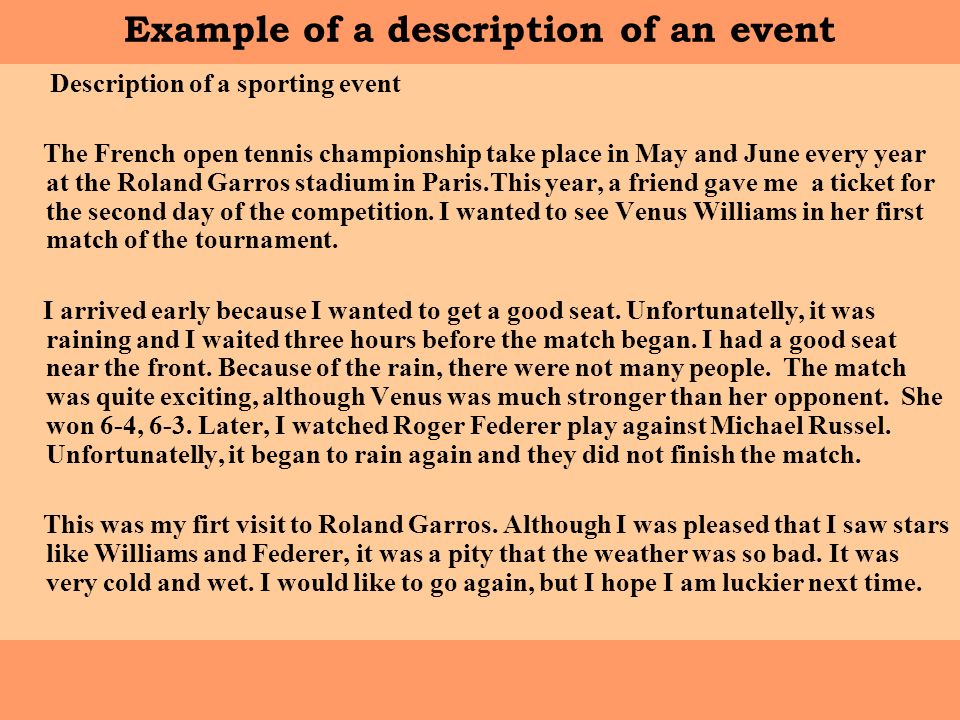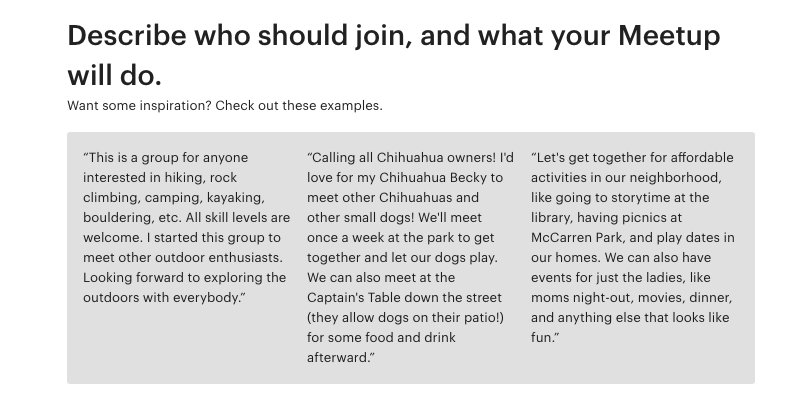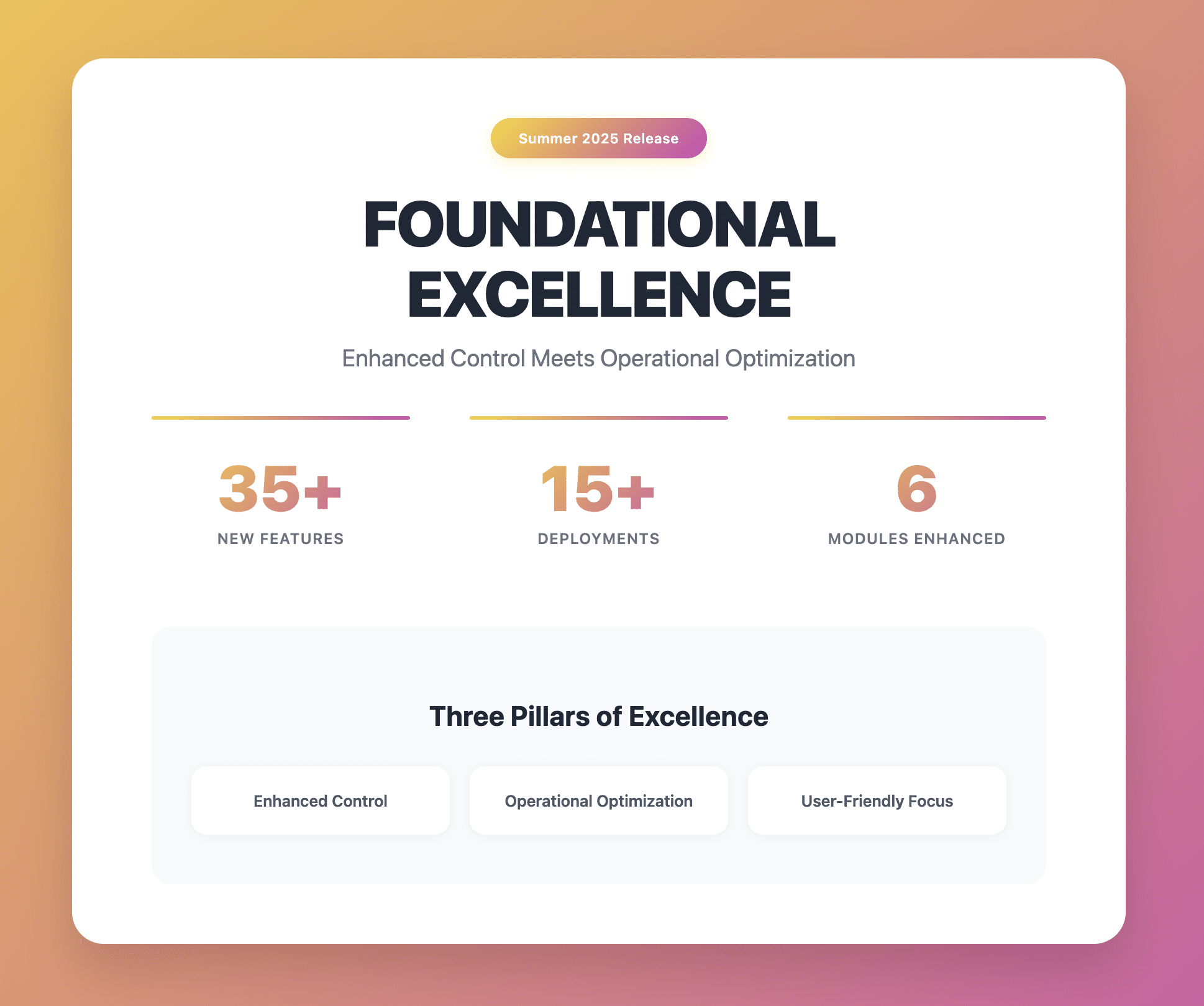Your event may be brilliant, but no one else will know that unless you tell them about it first. That’s what a strong and clear event description is for.
What is an event description?
An event description is a copy that aims to tell your potential attendees what will be happening at the event, who will be speaking, and what they will get out of attending. Good event descriptions can drive attendance to events and also lead to more media coverage.
Examples of event descriptions.
Here are a couple of event description examples:


These and other examples of how not to write a description are available on the Internet for research.
Why does an event description matter?
No matter how authentic your description is, it’s still only content. When you present an event description that is well-designed and eye-catching and pair your content strategy with in-person events you are organising, both tactics will be more effective and will result in an increase in your event attendance.
Events, by their very nature, are about connections. Through your bright event description, you can boost attendance, sponsorship, or hosting of an event; make new connections; or strengthen the old ones. Learn how to write an event description that will attract the media’s attention.
Elements and requirements for an event description.
There are infinite ways to add creativity and personalisation to your event. Nevertheless, here are the necessary elements for writing an event description:
The five W’s of your event:
- What: What is the name of the event? What benefits can guests expect?
- Who: Who is hosting the event?
- When: When will the event take place?
- Where: What is the venue of the event?
- Why: Why is the event being held? Why should guests come?
In addition, you should include a captivating picture in your description as well as keywords or actionable hashtags to make it searchable on social media.
There are also many ways you can phrase your event description, and the choice of wording is mostly determined by the communication’s intention: encouraging the recipient to take part in communication, establishing and maintaining business contacts, building interpersonal relationships between communicants (appreciation, presentation, or exhibition), or just having a good time (ball or banquet).

How to write an event description step by step.
To drive event attendance, your description should be extremely appealing, so use the best description writing practices and tips for writing by following our steps.
Defining the goal of an event description.
Your goal with an event description will be to maximise the attendance of people who will enjoy and benefit from your event. This is different than just getting people to your event, so make sure you stick to your objectives when you write your description.
Understanding your audience.
Knowing your people will be the next thing you need to do. Events are a lot of work, and building an audience for your events means great word of mouth. You may even forget to invite media. Your organisation’s brand, or your event brand, matters; and all of that will be shared by your attendees via social media, Facebook event description, ect.
How to improve your event description.
To improve the description for an event, revise the previous event descriptions, correct mistakes, research your competitors’ activity, and take some measures to prevent pitfalls in future events. Personalise your descriptions, and use event tools to automate personalised communication.
Tools that will help.
It’s not a secret that there are tools and event management platforms that can help you write a description for your event, plan your event, and so much more.
Pitfalls.
You should keep in mind your audience while writing event descriptions. Sometimes there is a need for multiple or mixed formats to adapt your description to your unique audience. For example, there are descriptions for partners and for the general public, for a general audience and for the press, and for sponsors.
Of course, a comprehensive promotion of the event that includes advertising, announcements, and PR activities may also be implemented to the fullest, but any event life cycle starts with a description, so make sure it’s effective.
Event description Dos and Don’ts.
Don’t:
Be lazy about researching and inquiring about the best event description practices, examples, and writing methods.
Do:
Use event description samples or hire a professional copywriter.
Don’t:
Miss one of the obligatory Ws when writing your description or confuse your audience or partners by throwing tons of questions at them.
Do:
Add costs and logistics (registration/advance purchase, transportation and parking, and other details) to the five Ws of your event.
Additional ways to increase event attendance.
There are additional ways to attract your audience and increase event attendance.
Copywriting: Use the most effective copywriting methods of drawing attention to one or more aspects of a product or brand as well as the company itself or the events within your descriptions (storytelling, slogans, quotes, etc.).
Social Proof: Reference past attendees and sponsors to illustrate how popular and enjoyable the event is. Provide trustworthy online reviews and personal recommendations of former attendees.
Incentives: Include extra bonuses into your descriptions. This creates an extra incentive for potential attendees to come. Do event swag, contests, lucky draw, and other games.
Charity: Offer them an opportunity to participate in fundraising, which is always worth coming for and is a worthy thing to try at events.
Urgency: Just like in the case of selling tickets, make your event urgent and limited in time to encourage people to sign up.
For example:
“Big Sean will be at the Underground at 333 Yonge Street on March 24, 2015 at 5:00 p.m. for an exclusive FAN MEET & GREET. Space is limited to the first 300 fans on a first-come, first-serve basis.”
Tips to increase attendance to your event.
There are a couple of effective ways to increase event attendance in addition to your event description:
- Make the audience part of the event.
- Start with a catchy and engaging title page.
- Tell a story or include a slogan in your event description.
- Keep it simple and tell about the brand.
- Plan a unique experience and promote it.
- Send personal invites to the event.
- Get the media to cover it.
Provide your contact information and branding. You can also provide useful links or references to previous projects of yours or an invitation to participate in other events you are going to organise in the near future.
Drive event registrations with a killing event description.
Now you know how to write a great event description and improve your next event. Mind the five Ws of event descriptions, use event planning tools and tips to improve your writing, do not forget to research other successful events and apply some ideas to increase attendance to your event. Remember that good description goes together with strong brand images. Make sure your entire event website designed to provoke a desired action to become a part of your next event. We hope this will help you to approach this process successfully. Get started with Gevme for free and explore how we can assist you. Good luck!








